The Jagannath Rath Yatra is one of the biggest and most popularly celebrated events in India. It takes place in the Jagannath temple of Puri. The spectacular temple in Puri, Odisha, houses the idols of Lord Jagannatha, a form of Lord Vishnu, his brother Lord Balarama and his sister Devi Subhadra. During the Rath Yatra, the three idols are taken out from the temple and the priests display them to all devotees in a grand procession. This is also called the ‘Jagannath Car Festival’, a name that is more common among foreigners than Indians. But, why bring the idols out of the temple? Why the chariot?
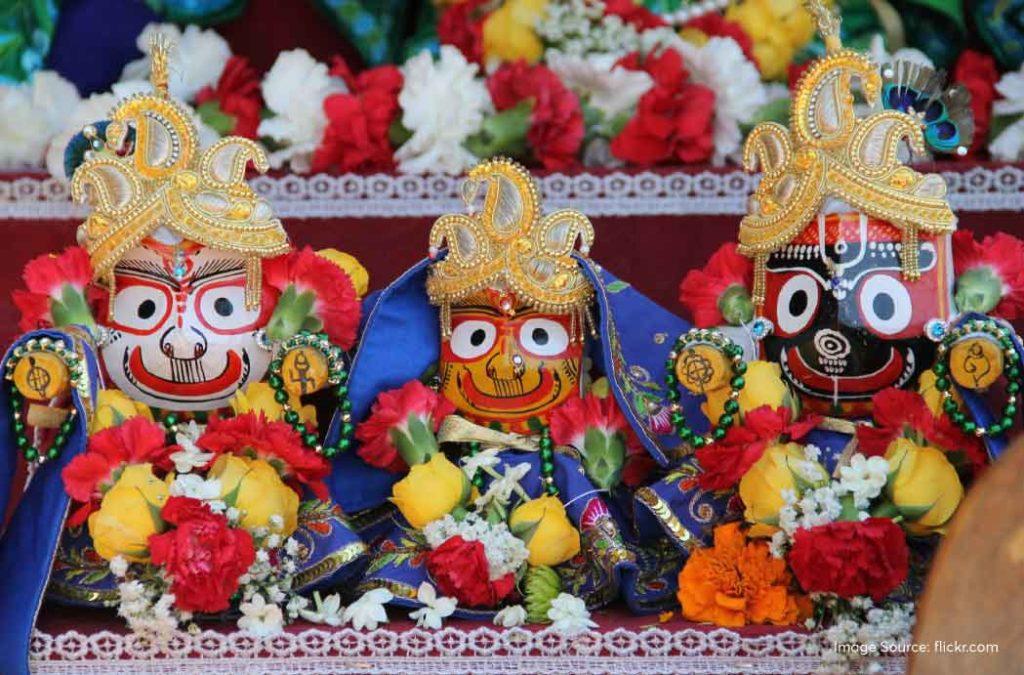
There’s a story, an interesting history and a lot of significance behind the Jagannath Rath Yatra. Read on to find out!
Dates and Timings
According to the holy Hindu calendar, Jagannath Rath Yatra will be organised on the Dwitiya Tithi during Shukla Paksha of the Ashada month. According to the Gregorian calendar, this usually falls in the month of June or July.
Jagannath Rath Yatra 2024 will begin at 4:26 AM on 7th July and end at 4:59 AM on 8th July. However, the festivities are not limited to just one day. We will learn more about that in the coming sections.
History of Jagannath Rath Yatra
Different stories tell us about the history of Jagannath Rath Yatra. Firstly, it is believed that on the day of Rath Yatra, Lord Jagannath takes his brother Balram and sister Devi Subhadra to his birthplace. This signifies his journey from Vrindavan to Mathura. The journey of the chariot begins from the Jagannath temple and ends 3 kms away at the Gundicha temple.
There’s another story that says that the chariot ride is a pleasant trip that the three deities decided to embark on together. One day, Devi Subhadra expressed the desire to see her aunt. The brothers prepared an elaborate chariot for their sister and went to see their aunt together. This is why, every year, the chariot travels from Jagannath temple to Gundicha temple and the deities arrive as guests at their aunt’s house.
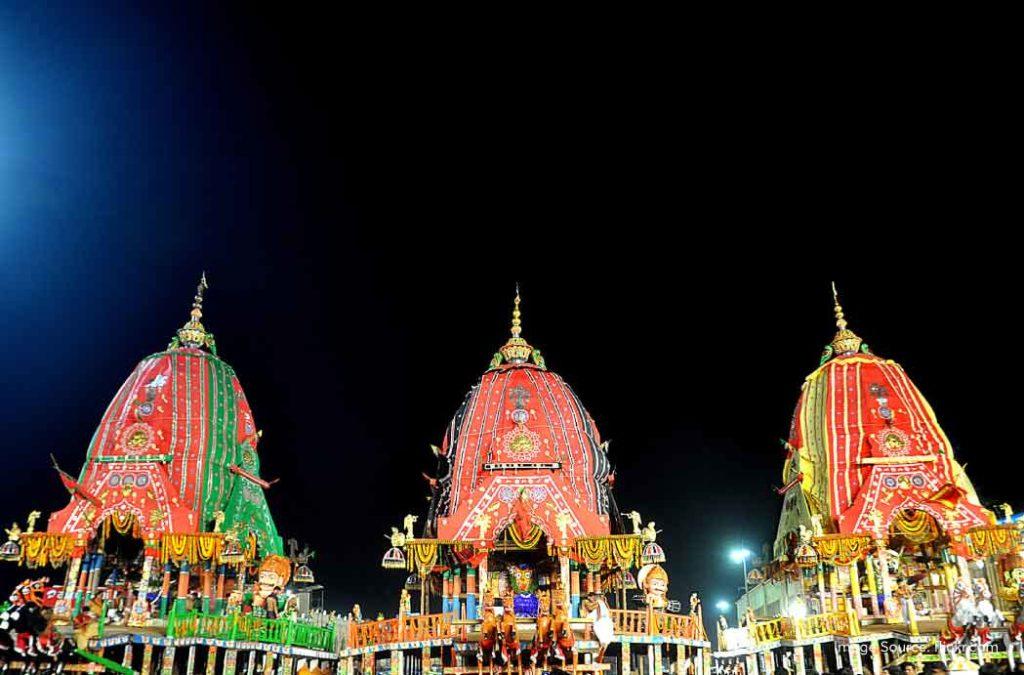
The local folklore of Odisha is very different. The people in Puri believe that Gundicha was the wife of King Indradyumna, the person who initially built the Jagannath temple on the orders of Lord Jagannath himself. Queen Gundicha was an ardent devotee of Lord Krishna. She helped in the construction of the temple and did several good deeds to earn the praise of her people. She asked Lord Jagannath for a wish. She wanted him to come out of the temple once a year so that the sinners and untouchables who are often not allowed in the temple would also be able to see the Lord and seek salvation. Honouring her wish, Lord Jagannath travels from his temple to the abode of Queen Gundicha or the Gundicha temple.
There is so much to learn about Jagannath Temple in Puri. Every story associated with the holy shrine will leave you mesmerised.
Significance of Jagannath Rath Yatra
The word Jagannath can be divided into two distinct terms – ‘Jag’ or ‘Jagan’ which means the universe and ‘Nath’ which means Lord. Jagannath literally means the Lord of the Universe. The Jagannath temple is one of the shrines in the Chaar Dham Yatra of Hinduism. It is believed that devotees must visit the four temples of the Chaar Dham before they die to attain moksha or salvation. It will rid them of the karmic cycle and give them eternal peace.
One glimpse of Lord Jagannath can soothe the hearts. With his wide eyes and disproportionate body, the deity is said to register the faces of all the devotees who visit them. During the Jagannath Rath Yatra, the spiritual energy is too high in Puri. Several pilgrims from across the world come to offer their prayers. You will be surprised to see the crowd that gathers in the coastal city!
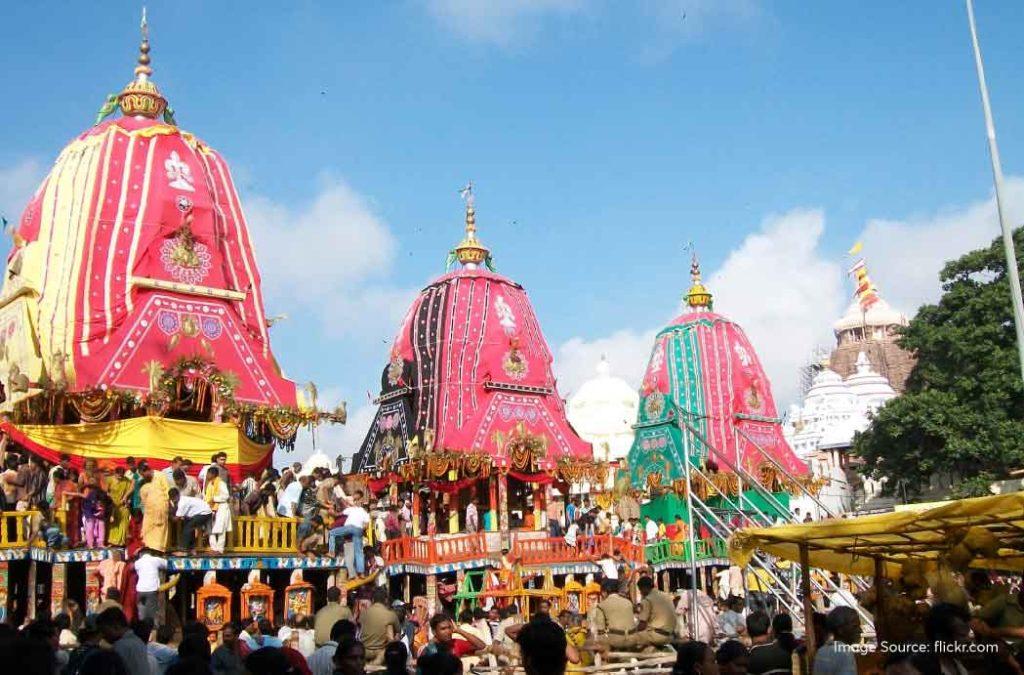
Jagannath Rath Yatra is all about unity and togetherness. There is no discrimination among the people who gather to pull the chariot. Anyone, irrespective of their religion, caste, creed and colour can pull the chariot, offer their prayers to the deities and seek blessings. This is the time when the successors of Odisha also join the crowd and become one with them despite their privileges. In the eyes of God, everyone is equal. This is exactly what Queen Gundicha also wanted when she asked Lord Jagannath for a yearly ‘darshan’ to the people outside the temple walls.
The chariot and the rituals
The construction of the three chariots that will be used in Jagannath Rath Yatra 2024 is not a simple affair. They are newly constructed every year using raw materials from specific trees like Phassi and Dhausa. They are brought from the state of Dasapalla by a group of carpenters who belong to a specific family. This family has earned the hereditary rights to construct the chariots every year. The logs of wood are set as rafts on River Mahanadi and are collected near Puri. These are then transported by the road and taken to the temple premises.
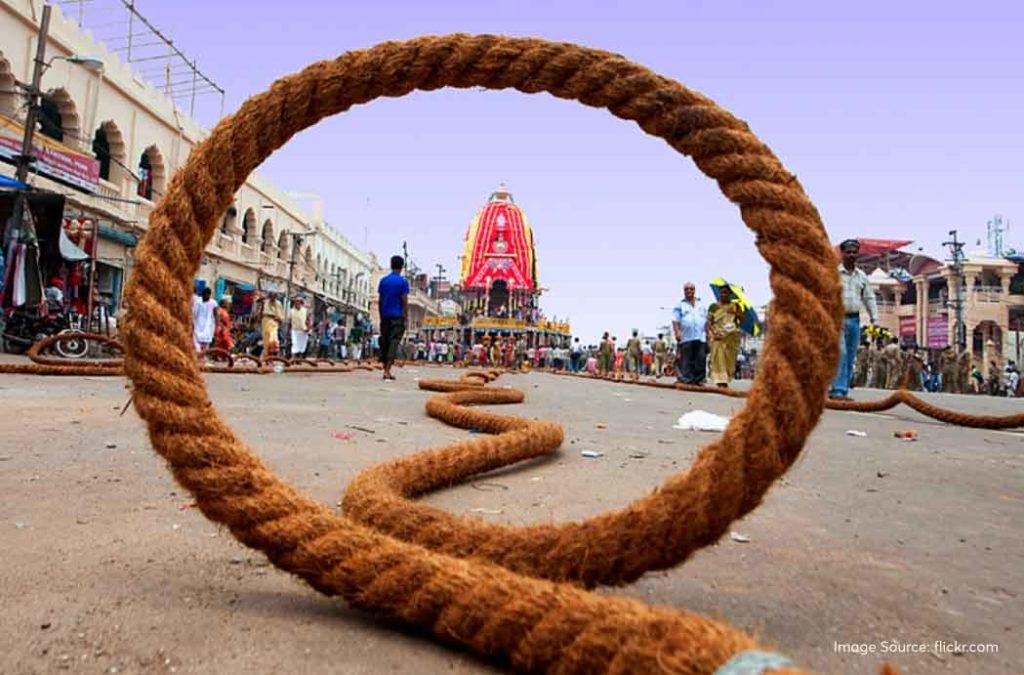
Each of the three chariots has its own unique design. These chariots are made to stand on Bada Dhanda or the Grand Avenue which is closer to the eastern entrance of the temple. The chariot of Lord Jagannath has a height of roughly 44 feet. It has the exact dimensions of 34’6″ x 34’6″. There are 16 wheels supporting the chariot and it is decorated with red and yellow clothing on the top. Lord Balarama’s chariot is roughly 43 feet tall and has the exact dimensions of 33’ x 33’. It is decorated with red and green clothes on the top and has 14 wheels. Devi Subhadra’s chariot is 42 feet tall with the exact dimensions of 31’6″ x 31’6″. It is decorated with red and black clothing on the top and has 12 wheels. Lord Balarama’s chariot also has a flag on top with a palm tree emblem.
Each of these chariots has its own charioteer and a guardian. For Lord Jagannatha’s chariot, Garuda is the guardian and Daruka is the charioteer. For Lord Balarama’s chariot, Vasudeva is the guardian and Matali is the charioteer. For the chariot of Devi Subhadra, the guardian is Jayadurga and the charioteer is Arjuna.
The Rituals
The preparations for the Jagannath Rath Yatra begin almost months prior to the actual date. This includes prepping the temple premises, the security protocol of the city and the making of the three chariots. One day before the Rath Yatra, Gundicha temple is cleaned by the devotees. This is called Gundicha Marjana. During the auspicious timing on the day of Rath Yatra, the idols from the temple are decked and brought to the chariots. Then, these chariots are moved towards the Gundicha temple. Lord Jagannath along with Balrama and Subhadra stay at the Gundicha temple for eight days.
On the fourth day after Rath Yatra, Hera Panchami is celebrated. This is the occasion when Goddess Lakshmi, wife of Lord Jagannath, visits Gundicha temple in search of her husband. This falls on the Shashthi Tithi according to the Hindu calendar.
After resting for 8 days in the Gundicha temple, Lord Jagannath returns to his main temple. This is the return journey that is called the Bahuda Yatra. This falls on the Dashami tithi of the Hindu calendar. During the Bahuda Yatra, Lord Jagannath, Lord Balrama and Devi Subhadra stop at Mausi Maa temple which is dedicated to Goddess Ardhashini. ‘Mausi’ means aunt. She is believed to be the aunt that Devi Subhadra wanted to visit, the story that we’ve told you above.
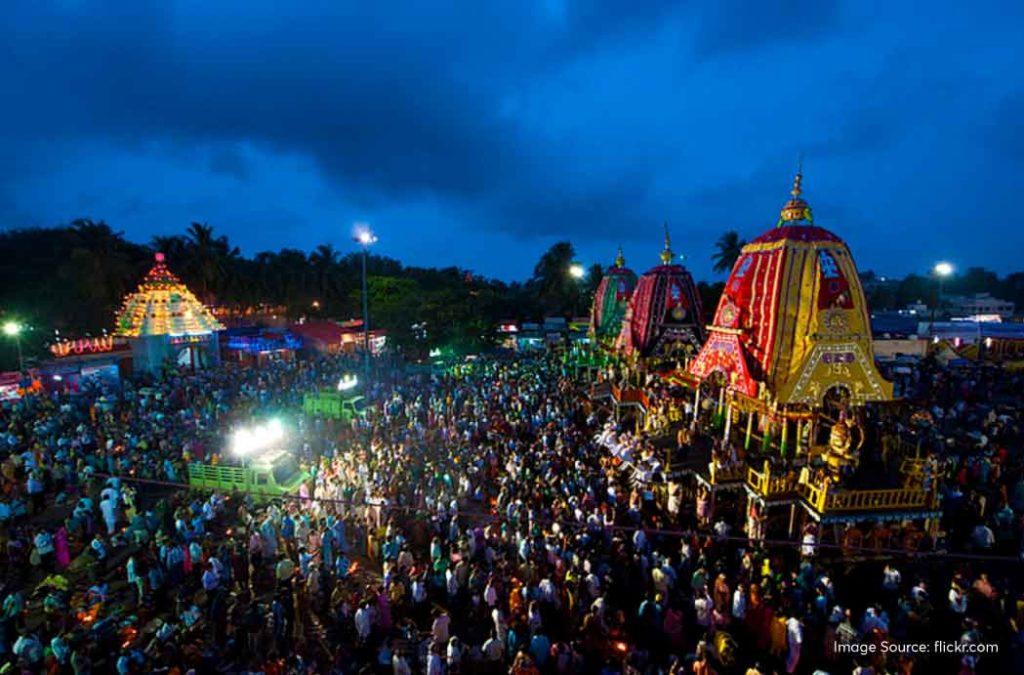
There are times when the date of the return journey is sometimes delayed. This happens if there are any inauspicious days in between disrupting the time cycle. However, the Lord will return to the Jagannath temple before Devshayani Ekadashi – a festival that marks the day when Lord Jagannath enters his spiritual sleep that lasts for four months.
18 days before the Rath Yatra, Lord Balarama and Devi Subhadra receive their ceremonial baths and this is called ‘Snana Yatra’. It falls on the Purnima Tithi in the Jyeshta month of the Hindu Calendar.
Pilgrims and Devotion
Not just from Odisha, devotees arrive in Puri from different parts of the world. Non-resident Indians book their tickets and make arrangements well in advance to attend the Jagannath Rath Yatra. Different religious groups including ISKCON attend the ceremonial day and seek blessings from the deities. This is because witnessing the Rath Yatra is believed to be a once-in-a-lifetime opportunity.
The chariot festival is a celebration that has traditional music, dance and performances and the grand procession in itself is a spectacle that will keep you captivated. The government arranges temporary lodging facilities, camps and rest houses for the devotees because the hotel and lodging options are not sufficient to accommodate the huge influx. That is why, we suggest that you book your hotels in Puri well in advance to avoid the hassle.
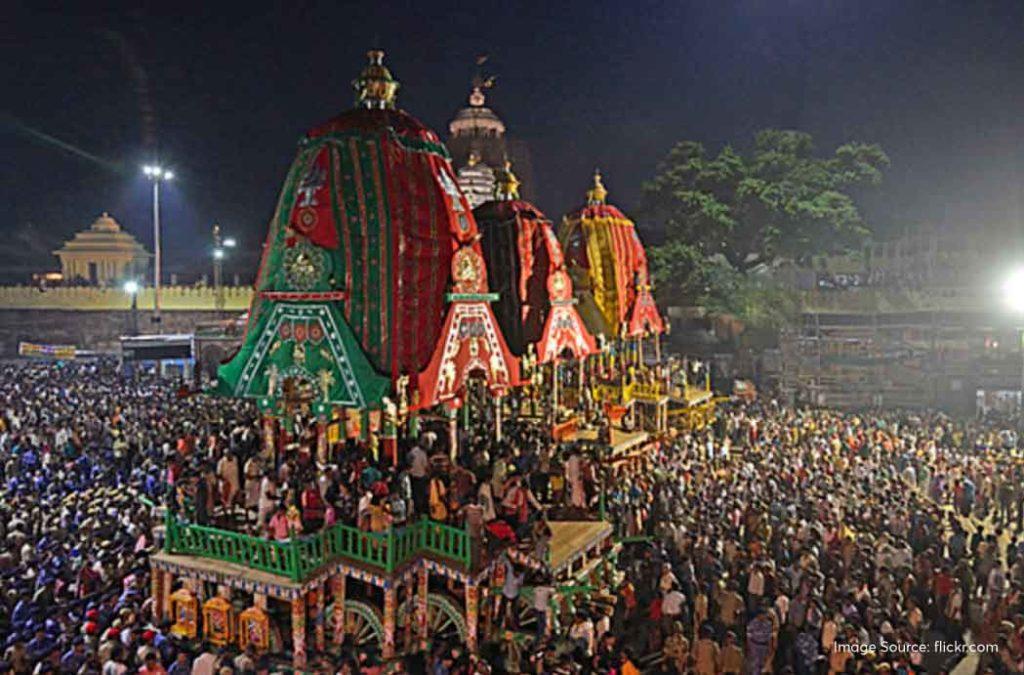
One of the most significant aspects of the Rath Yatra is the opportunity to pull the chariots. Lakhs of devotees come forward hoping that they’d get a chance to pull the chariot, even if it is for a few seconds.
This significant influx of pilgrims is a boon to the tourism sector of Odisha. Vendors, artisans, hoteliers and the transportation sectors greatly benefit from the festive season.
How to reach Puri?
You can reach Puri city by taking a flight from your city, by railway or even by road. It is well-connected with other Indian cities.
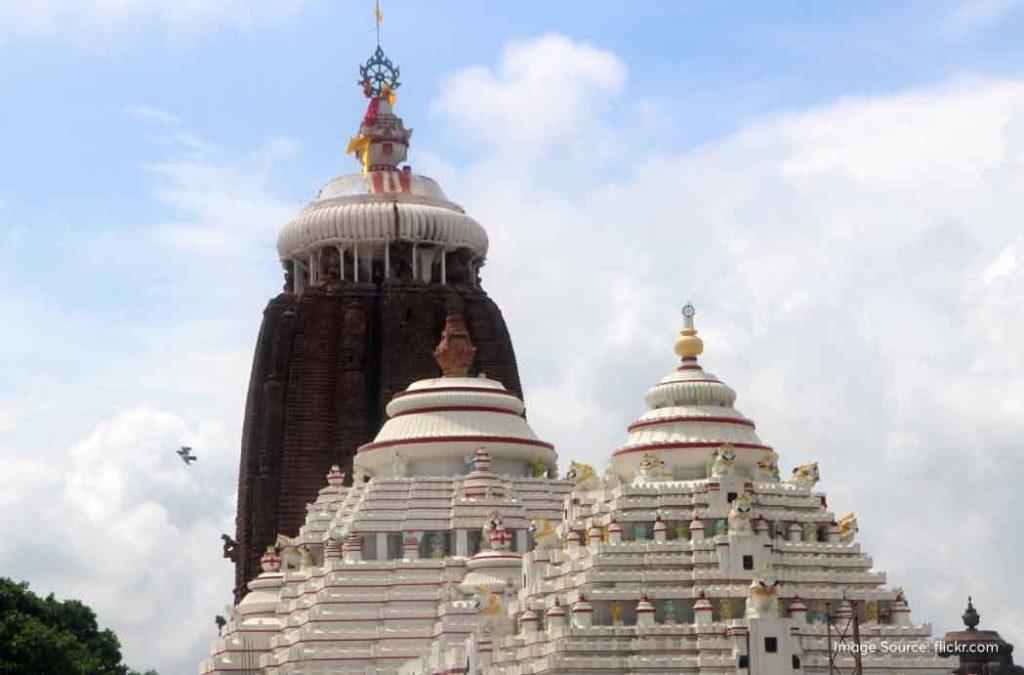
By Air
People who are planning to take the flight must reach Bhubaneshwar first. This is the capital city of Odisha and is about 56 kms away from Puri. Major Indian cities like Delhi, Mumbai, Jaipur, Hyderabad, Chennai and Bengaluru have direct flights to Biju Patnaik Airport in Bhubaneshwar. People who are coming from other countries can land in Delhi, Chennai or Hyderabad first and then take a connecting flight to Bhubaneshwar.
By Rail
The Puri railway station receives regular trains from New Delhi, Chennai and Kolkata. If you are planning to reach Bhubaneshwar first, you can easily find daily trains from the capital to Puri. The Jagannath temple is only 3 kms away from the Puri railway station.
By Road
There are regular buses that run between Bhubaneshwar and Gundicha temple bus stations. The distance is less and can be covered in roughly 20 minutes. NH16 connects Bhubaneshwar with other south Indian cities like Hyderabad, Chenna and Bengaluru. Once you reach Bhubaneshwar, you can easily drive toward Puri. However, during Rath Yatra, there is hardly any space to park your vehicles. The public transport is also very crowded. It is important to plan ahead to avoid sudden hindrances.
Jagannath Rath Yatra is a celebration that brings different people together. A common love for Lord Jagannath brings devotees together. While singing the songs of the Lord of the Universe, swaying to the tunes of the wind and accompanying him to his abode of eight days, pilgrims feel a sense of spiritual enlightenment. The Rath Yatra is magical and breathtaking! You must attend it at least once in your lifetime.


